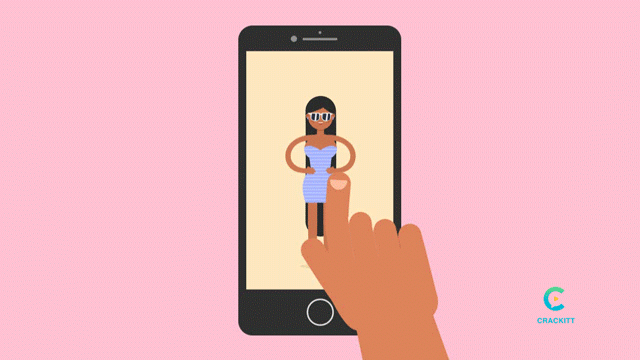Nowadays, people trust influencer referrals a staggering 60% more than a brand’s own social marketing in a world of overproduced and unauthentic advertising. As a result, it is crucial to begin working with influential people in your industry.
However, there are other elements to take into account in order to establish this crucial partnership successfully for both sides. When it comes to influencer pricing, for instance, everyone seems to have a different opinion.
Prior to contacting influencers, you should first think about your strategy and objectives. To accomplish this, all you need to do is list your objectives and key performance indicators (KPI) in a planning document or spreadsheet. Use the following KPIs as a good place to start:
Boost recognition of the brand.
Marketing via affiliates.
Up your sales.
Get more fans.
Now let’s talk about influencer price, a crucial but distinct factor. Each platform has a different one.
Influencer compensation should be determined by follower and engagement metrics. A typical Instagram post in 2022 cost $1,450, and an Instagram story cost $980 on average. Influencers typically have price lists for the content they are willing to create. When simulating and forecasting results, use those rates as the default values. According to their reach, influencers typically demand the following prices:
$10 to $100 each post for Nano influencers (1000–10,000 followers).
Micro influencers: $100 to $500 each post (10,000–50,000 followers).
$500 to $5,000 per post for mid-tier influencers (50,000–500,000 followers).
Macroinfluencers: $5000 to $10,000 each post (500,000–1,000,000 followers).
Mega influencers: $10k+ per post for those with 1,000,000+ followers
The industry average is $100 for every 10,000 followers as a starting point. As a general rule, you can use the following formula:
The overall rate is $100 divided by the number of postings and other factors (such as costs associated with the shoot, usage, and exclusivity).
Using a TikTok influencer is your best option if you have a budget and want to address a younger audience. However, you should be aware that a TikTok costs three times as much as an Instagram post. This is due to the fact that developing video material takes longer than making a snapshot. A sponsored TikTok typically costs $3,500. That ranks second highest after YouTube, where the average video price is $4,500. Compared to other platforms, TikTok’s algorithm allows for a higher amount of engagement, increasing your chances of getting viral. According on influencer tier, the average cost per TikTok is as follows:
Nano influencers: $900 per post (1000–10,000 followers).
Micro influencers: $1,800 per post (10,000–50,000 followers).
Mid-tier influencers: $3,200 per post (50,000–500,000 followers).
$5,500 per post for macro influencers (500,000–1,000,000 followers).
Mega-influencers with one million followers or more: $7,500+ per post
As a general rule, you can use the following formula:
Average views, likes, and comments from an influencer’s last five pieces of content divided by the cost of the material is known as their cost per thousand (CPM).
Beyond the size of the audience and the engagement rate, there are other elements that determine influencer pricing. These consist of:
Exclusivity: You’ll probably pay a price for having an exclusivity clause that forbids your influencer from working with your rivals. If you consider this to be significant, consider it when you bargain and create a budget.
Agency Charges: Many influencers are managed or represented by agencies, who frequently charge extra fees.
Campaign Duration: This has an immediate impact on influencer pricing. The price of a one-time activation, such as holding a contest or promotion, is less than that of an ongoing endorsement campaign.
Post Combinations, which involve asking an influencer to post on numerous platforms, are more expensive but increase the campaign’s reach by interacting with other audiences.
URL in Bio If your objective is to increase traffic, placing a link in your bio is a fantastic idea since you cannot include one in your TikTok or Instagram caption. This extra expense is probably necessary.
Now that you are aware of the costs associated with Instagram and TikTok, it is important to be aware of the many types of agreements that influencers may demand.
Affiliate Promotion. In this sales strategy, a brand will pay an influencer to promote its goods or services in return for a commission based on sales generated by the influencer’s recommendations. Brands favour affiliate marketing because there are no up-front expenses. The range of commission rates is 8% to 50%, depending on the influencer.
Brand Ambassadors. As a result, the influencer will frequently post material regarding your company’s name and goods. It’s critical that you pick your brand ambassador carefully because this is a long-term engagement and they will be intimately identified with your brand.
Sponsored Posts. A photo or a video with a caption will typically be part of a sponsored post. Typically, the influencer will produce the material, and occasionally, it will also include a mention of the good or service.
Gifting. In an effort to get a favourable review on their site, some brands would gift influencers goodies. With nano and micro influencers, you might be able to set up giving in exchange for a shoutout, but this strategy works less well with influencers with mega influencers.
……………………………………………………………………………..
Our founder Vincent Salera is quite social, you can follow him below:








